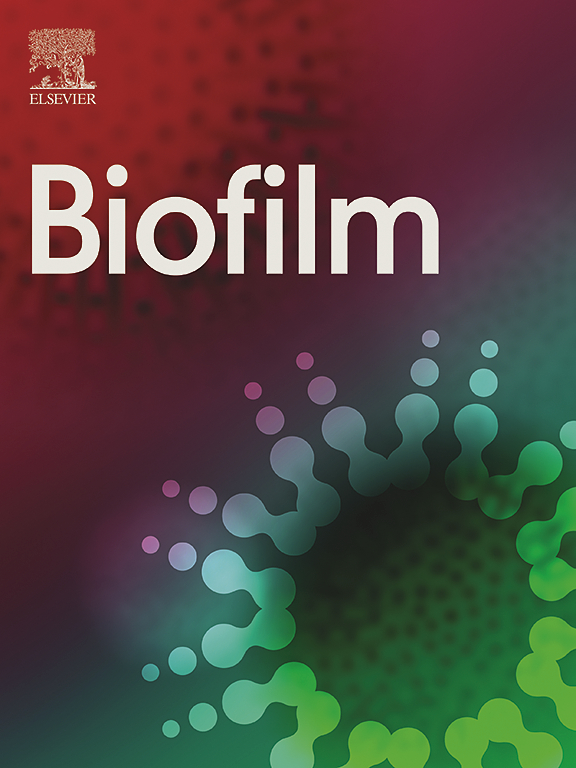Nonlinear viscoelasticity of filamentous fungal biofilms of Neurospora discreta
IF 4.9
Q1 MICROBIOLOGY
引用次数: 0
Abstract
The picture of bacterial biofilms as a colloidal gel composed of rigid bacterial cells protected by extracellular crosslinked polymer matrix has been pivotal in understanding their ability to adapt their microstructure and viscoelasticity to environmental assaults. This work explores if an analogous perspective exists in fungal biofilms with long filamentous cells. To this end, we consider biofilms of the fungus Neurospora discreta formed on the air-liquid interface, which has shown an ability to remove excess nitrogen and phosphorous from wastewater effectively. We investigated the changes to the viscoelasticity and the microstructure of these biofilms when the biofilms uptake varying concentrations of nitrogen and phosphorous, using large amplitude oscillatory shear flow rheology (LAOS) and field-emission scanning electron microscopy (FESEM), respectively. A distinctive peak in the loss modulus (G″) at 30–50 % shear strain is observed, indicating the transition from an elastic to plastic deformation state. Though a peak in G″ has been observed in several soft materials, including bacterial biofilms, it has eluded interpretation in terms of quantifiable microstructural features. The central finding of this work is that the intensity of the G″ peak, signifying resistance to large deformations, correlates directly with the protein and polysaccharide concentrations per unit biomass in the extracellular matrix and inversely with the shear-induced changes in filament orientation in the hyphal network. These correlations have implications for the rational design of fungal biofilms with tuneable mechanical properties.
神经孢子菌丝状生物膜的非线性粘弹性
细菌生物膜是一种胶体凝胶,由细胞外交联聚合物基质保护的刚性细菌细胞组成,这对于了解细菌生物膜适应环境攻击的微观结构和粘弹性的能力至关重要。这项研究探讨了具有长丝状细胞的真菌生物膜是否存在类似的观点。为此,我们考虑了在空气-液体界面上形成的真菌 Neurospora discreta 的生物膜,该真菌已显示出有效去除废水中过量氮和磷的能力。我们利用大振幅振荡剪切流变学(LAOS)和场发射扫描电子显微镜(FESEM)分别研究了生物膜吸收不同浓度的氮和磷时其粘弹性和微观结构的变化。在 30-50% 的剪切应变时,损失模量(G″)会出现一个明显的峰值,表明已从弹性变形状态过渡到塑性变形状态。虽然在包括细菌生物膜在内的几种软材料中都观察到了 G″ 的峰值,但却无法用可量化的微结构特征来解释。这项工作的核心发现是,G″峰的强度(表示对大变形的抵抗力)与细胞外基质中单位生物量的蛋白质和多糖浓度直接相关,与剪切力引起的菌丝在菌丝网络中的取向变化成反比。这些相关性对合理设计具有可调机械特性的真菌生物膜具有重要意义。
本文章由计算机程序翻译,如有差异,请以英文原文为准。
求助全文
约1分钟内获得全文
求助全文

 求助内容:
求助内容: 应助结果提醒方式:
应助结果提醒方式:


